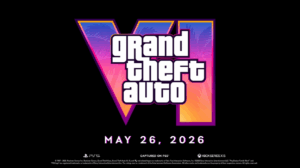Exploring the Starbucks Teddy Bear Cup Phenomenon
If you’ve been scrolling through social media lately, you’re likely to have come across the adorable Starbucks Teddy Bear Cup that has taken the internet by storm. This charming cup has become a symbol of cozy winter vibes and an essential item for Starbucks enthusiasts and collectors alike. But what is it about the Starbucks Teddy Bear Cup that has ignited such passion among fans, and how does it reflect broader trends in consumer behavior and brand perception? In this article, we delve into the details of the Starbucks Teddy Bear Cup phenomenon, analyzing its popularity and what it means for the brand.
The Starbucks Teddy Bear Cup: A Collector’s Dream
The Starbucks Teddy Bear Cup has captured the hearts of many, becoming a must-have for both avid Starbucks fans and collectors. Shaped like a cute teddy bear, this cup isn’t just functional; it’s a statement piece that adds charm to the Starbucks experience. Collectors often view limited-edition products, like this cup, as valuable—propelling them into a frenzy when new designs are released.
According to sources on social media, particularly a notable post by Markie Devo on Facebook, the anticipation surrounding these cups can lead to increased foot traffic at Starbucks locations, especially during the holiday season. This phenomenon illustrates how unique product offerings can effectively enhance customer experience and engagement.
Consumer Behavior Insights
The explosion of interest in the Starbucks Teddy Bear Cup can be attributed to various factors related to consumer behavior. Here are a few key insights:
- Social Media Influence: Platforms like Instagram and Facebook are crucial in promoting products. Unboxing videos and aesthetically pleasing images of the Teddy Bear Cup create excitement and urgency. Users are more likely to share their experiences, leading to viral trends.
- Limited Availability: The perception of scarcity increases demand. When products are marketed as limited editions, consumers feel a sense of urgency to purchase before they sell out.
- Emotional Connection: The nostalgic feelings that teddy bears evoke resonate with many customers. This emotional connection can enhance brand loyalty and attract new customers.
Starbucks’ Marketing Strategy
Starbucks has consistently excelled in understanding their customer base. The company’s marketing strategy employs several tactics to enhance the appeal of products like the Teddy Bear Cup.
1. **Engaging Storytelling:** Starbucks crafts stories around its products, often linking them to seasonal changes or cherished traditions. This storytelling approach creates a narrative that customers can relate to.
2. **Collaborations and Partnerships:** Collaborating with popular designers or influencers to create limited-edition cups generates buzz and expands reach to new audiences.
3. **Social Media Campaigns:** Starbucks utilizes various social media platforms to promote their cups, encouraging user-generated content and organic reach. This strategy amplifies messages directly from their fanbase.
The Impact of Limited-Edition Merchandise
Limited-edition merchandise like the Starbucks Teddy Bear Cup does more than just drive sales; it cultivates a community of brand advocates. Fans of Starbucks are known for their devotion, and products that help them express their love for the brand foster deeper engagement.
This merchandising strategy encourages repeat visits to Starbucks stores, as fans want to ensure they don’t miss out on future releases. Additionally, these products can serve as a unique marketing tool—fans often share images and reviews of their purchases online, thus increasing visibility and attracting new customers.
The Future of Brand Merchandise
As companies continue to adapt to changing consumer habits, incorporating unique merchandise can yield significant results. The Starbucks Teddy Bear Cup showcases how products can bridge the gap between utility and emotional connection. Other businesses can learn from Starbucks’ success by creating themed merchandise tied to holidays, events, or cultural moments.
In the current climate of consumerism driven by social media, the right product can become an overnight sensation. Brands that cultivate community and façade exclusive products are well-positioned to capture interest and share their stories with the world.
Final Thoughts
The Starbucks Teddy Bear Cup encapsulates the charm of seasonal offerings and brand engagement in today’s market. By combining toddler-like appeal with strategic marketing practices, Starbucks has managed to create a product that not only serves a functional purpose but also evokes joyful sentiments among its customers. As we look forward to future releases, it will be exciting to see how this trend develops and how brands can further innovate in their offerings to enchant their audiences.





